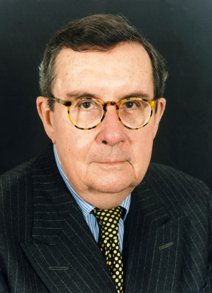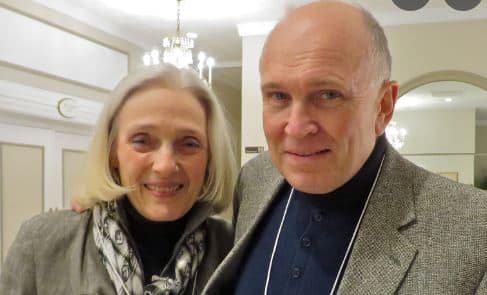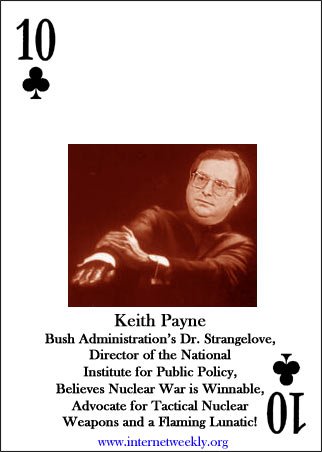
Over the years, only a small handful of policy pundits have bothered to find a core principle that might explain the American government’s irrational desire to expand its Cold War military alliance (NATO). With the collapse of the Soviet Union in 1991 and the demobilization of Warsaw Pact forces, the organization no longer had a reason to live and should have been disbanded.
Instead, under the Bill Clinton regime, NATO found new life and new members; and after 9/11, it was assigned a new purpose in the Bush administration’s war on terror. Flash forward to November 2010 when one of America’s few truly astute commentators, the now deceased William Pfaff, resorted to the term “medieval mysticism” to describe what had become of NATO’s mission in Afghanistan.
“American policy seems to these allies to be lost in fantasies as Alice was lost in a mathematician’s logical joke, in which all was reversed from what existed in real life, on the other side of the looking glass” Pfaff wrote.
Today, NATO remains more than ever lost on the other side of the mirror, with the only exception being that the location has changed from Afghanistan to Russia’s Border States; while the fantasy has transformed from making an Afghan democracy out of terrorists, warlords and drug kingpins into a World War II-style, Nazi blitzkrieg on Moscow.
As odd as it may seem to American audiences of 2016, William Pfaff’s use of medieval mysticism to describe American thinking is not as far beneath the surface of present day American policy as one might think. In fact following the crisis brought about by the failure of advanced technology to defeat Communism in Vietnam, America’s premier defense intellectuals were quick to fall back on the Middle Ages for a moral justification of their fantasies.

One vivid example came from future Reagan administration officials Colin S. Gray and Keith Payne in the summer 1980 edition of Foreign Policy magazine who declared in an article titled “Victory is Possible” that:
“Nuclear War is possible. But unlike Armageddon, the apocalyptic war prophesied to end history, nuclear war can have a wide range of options… If American nuclear power is to support U.S. foreign policy objectives, the United States must possess the ability to wage nuclear war rationally.”
Having the American Empire come of age at a time when it enjoyed an overwhelming nuclear advantage and unquestioned technological superiority, its plunge into military defeat in Vietnam simultaneous with the Soviet Union achieving a rough nuclear parity was cause for a deep philosophical crisis.
The old right and the “new right” embodied in pro-war advocacy groups like Team B, the Committee on the Present Danger and the American Security Council needed to undo the debilitating effects caused by their own failure in Vietnam. Discrediting the strategic doctrine implemented by Secretary of Defense Robert McNamara known as Mutual Assured Destruction or (MAD) topped a long list.
These former government insiders and harsh critics of détente believed that the constraints on nuclear war-fighting posed by the 1972 Anti-Ballistic-Missile Treaty (ABM) and the Strategic Arms Limitations Talks I and II (SALT), were predicated on a false assumption that nuclear weapons were too horrible to ever be used again.
Neoconservative defense intellectuals viewed this restraint as a form of suicide and vowed to break free of it by utilizing some pre-enlightenment thinking that challenged the very nature of modern reality.
The Cold War buildup for a nuclear war against the Soviet Union was never based on the rationale. No one on the left or right could predict with any certainty where or when a nuclear war would stop if one ever broke out. Regardless of the kind or size of nuclear weapons used, with the enemy’s leadership decapitated and communications destroyed, there’d be no one left to stop it.
Non-communist solutions to social problems were a matter of faith in which the political right and the political left shared similar goals but differed in tactics. But the political right’s accommodation of the political left was never more than an elaborate game of deception. In fact, according to the CIA’s own documents, “the theoretical foundation of the Agency’s political operations against Communism” for the first twenty years of the Cold War relied completely on the manipulation and control of the so-called progressive, liberal, non-Communist left.
Blamed by the neoconservative right for the failure in Vietnam and the relative decline in America’s nuclear posture, the non-communist left’s legitimacy as a valid political factor in American politics began to crumble. With the left’s policy of nuclear restraint now dismissed as irrational, what possible justification could be found to wage a nuclear war in which tens of millions of innocent Russians and Americans, as well as millions of others, would be killed?
By the late 1970s, those obscure strategic nuclear analysts who’d helped to formulate America’s nuclear policies had attained the stature of religious figures. With their supposed wisdom raised to an almost mystical level and accepted as dogma, the neoconservative high priests of the new right stood ready to displace not only the non-communist left but traditional conservatives as well.
By the summer of 1980 (6 months after the Soviet invasion of Afghanistan) two of those high priests were willing to take the dogma one step further by reinterpreting the Just War Doctrine of the Catholic Church to justify what reality, reason and common sense had forbad the U.S. from doing since the final days of World War II.
“Ironically, it is commonplace to assert that war-survival theories affront the crucial test of political and moral acceptability”, wrote Colin S. Gray and Keith Payne that summer.
“Surely no one can be comfortable with the claim that a strategy that would kill tens of millions of U.S. citizens would be politically and morally acceptable. However, it is worth recalling the six guidelines for the use of force provided by the “just war” doctrine of the Catholic Church…”
Carefully sidestepping the fundamental principle that war can only be “just” when used as a last resort and that targeting innocents is strictly forbidden, Gray and Payne would go on to claim that based on the most ancient rules of the game, not only did U.S. policy of nuclear deterrence toward the Soviet Union (MAD) fail to qualify for “just war,” but that in failing to plan to actually fight a nuclear war, “U.S. nuclear strategy is immoral.”
In other words, since Gray and Payne could not use a rational scientific process to achieve victory through nuclear weapons or to find hard evidence to support their claims that the Soviets assumed they could achieve victory through theirs, they turned to a premodern religious system (developed centuries before the first atomic bomb) that dismissed empirical evidence and replaced it with whatever they could imagine as truth, based on precepts evolved by medieval monks.
From the dawn of Christianity, the justification for killing fellow Christians presented scholars with a moral dilemma. St Augustine of Hippo (354–430 CE) originated Just War theory which was later refined and expanded by St. Thomas Aquinas (1225–1274). But murdering in the name of Christ was tricky business and often subject to conflicting interpretations.
![t. Thomas Aquinas (1225-1274) laid out the conditions when war could be justified long before nuclear weapons were imagined - Carlo Crivelli (1435–1495) [Public domain], via Wikimedia Commons](https://veteranstoday.com/wp-content/uploads/2016/11/Thomas-Aquiness-512-Just-War.jpg)
The influential Cistercian abbot, Bernard of Clairvaux weighed in with a different opinion in his famous twelfth-century treatise De Laude Novae Militiae (In Praise of the new Knighthood) by redefining the very nature of murder itself in support of his friend Hugues de Payens, Grand Master of the warrior monks known as the Knights Templar.
“The soldier of Christ kills safely and dies the more safely… He is the instrument of God for the punishment of malefactors and for the defense of the just. Indeed, when he kills a malefactor this is not homicide but malicide, and he has accounted Christ’s legal executioner against evildoers.”
Like Colin S. Gray and Keith Payne’s “Victory is Possible,” Clairvaux’s treatise bent the rules for the use of acceptable violence on behalf of an elite group of European nobles who wanted to go to war in the holy land. It opened the floodgates of recruits for the Crusades, established the spiritual and legal authority of powerful, wealthy Catholic military orders, and put the power of the feudal machine under Church control, at least temporarily.
After working for three years as the host of a public affairs program (under the terms of the Fairness Doctrine) for an affiliate of Pat Robertson’s Christian Broadcasting Network in Boston, we were aware that an aggressive rightwing/Christian political movement was merging into the American mainstream.
But following the publication of Gray and Payne’s 1980 treatise, we realized that the underlying philosophy of America’s defense policy was also being challenged on the basis of faith, not facts.

Just war was a contentious subject with a long history, including a surprising connection to president JFK’s Fitzgerald family. The Just War Doctrine of the Catholic Church had been invoked by the Papal Nuncio on behalf of the Fitzgerald family in Ireland during the 1570s in their war against the Elizabethans.
The Catholic Fitzgeralds had lost, and some notable Elizabethan victors had gone on to establish a corporate empire that would redefine and dominate the world’s economy from North America to Asia for the next four centuries.
Join us as we explain how medieval feuds between rival families evolved into today’s “deep state” and continue to drive today’s increasingly desperate actions in Europe and the Middle East to control the world’s trade routes and resources, in our final chapter of America, an Empire in Twilight.
Copyright © 2016 Gould & Fitzgerald All rights reserved
America, an Empire in Twilight Series
- PART I: When America Became the Dark Force
- PART II: How Guilt, Innocence & Facts Have Been Rendered Irrelevant
- PART III: Neoconizing the Just War Doctrine in the service of the American Empire
- PART IV: America’s Late Stage Imperial Dementia

Paul Fitzgerald and Elizabeth Gould are authors of Invisible History: Afghanistan’s Untold Story, published by City Lights (2009), Crossing Zero The AfPak War at the Turning Point of American Empire, published by City Lights (2011). Their novel The Voice, was published in 2001. Their memoir, The Valediction Three Nights of Desmond (2021) and The Valediction Resurrection (2022) was published by TrineDay. For more information visit invisiblehistory , grailwerk and valediction.net
ATTENTION READERS
We See The World From All Sides and Want YOU To Be Fully InformedIn fact, intentional disinformation is a disgraceful scourge in media today. So to assuage any possible errant incorrect information posted herein, we strongly encourage you to seek corroboration from other non-VT sources before forming an educated opinion.
About VT - Policies & Disclosures - Comment Policy





Comments are closed.